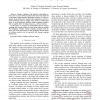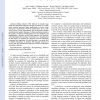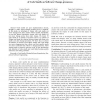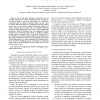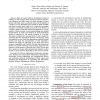WCRE
2009
IEEE
14 years 6 months ago
2009
IEEE
—Current malware is often transmitted in packed or encrypted form to prevent examination by anti-virus software. To analyze new malware, researchers typically resort to dynamic c...
WCRE
2009
IEEE
14 years 6 months ago
2009
IEEE
—“God class” is a term used to describe a certain type of large classes which “know too much or do too much”. Often a God class (GC) is created by accident as functionali...
WCRE
2009
IEEE
14 years 6 months ago
2009
IEEE
Abstract—Change coupling is the implicit relationship between two or more software artifacts that have been observed to frequently change together during the evolution of a softw...
WCRE
2009
IEEE
14 years 6 months ago
2009
IEEE
Abstract—The principles and best practices of object oriented design require that modules in a program should match logical decomposition of the knowledge that the program implem...
WCRE
2009
IEEE
14 years 6 months ago
2009
IEEE
Abstract—Object-oriented (OO) software is usually organized into subsystems using the concepts of package or module. Such modular structure helps applications to evolve when faci...
WCRE
2009
IEEE
14 years 6 months ago
2009
IEEE
—Current research on code clones tries to address the question whether or not code clones are harmful for the quality of software. As most of these studies are based on the fine...
WCRE
2009
IEEE
14 years 6 months ago
2009
IEEE
—Code smells are poor implementation choices, thought to make object-oriented systems hard to maintain. In this study, we investigate if classes with code smells are more change-...
WCRE
2009
IEEE
14 years 6 months ago
2009
IEEE
—For a long time, dynamic tracing has been an enabling technique for reverse engineering tools. Tracing can not only be used to record the control flow of a particular component...
WCRE
2009
IEEE
14 years 6 months ago
2009
IEEE
—Much of modern software development consists of building on older changes. Older periods provide the structure (e.g., functions and data types) on which changes in future period...
WCRE
2009
IEEE
14 years 6 months ago
2009
IEEE
—Determining who are the copyright owners of a software system is important as they are the individuals and organizations that license the software to its users, and ultimately t...

